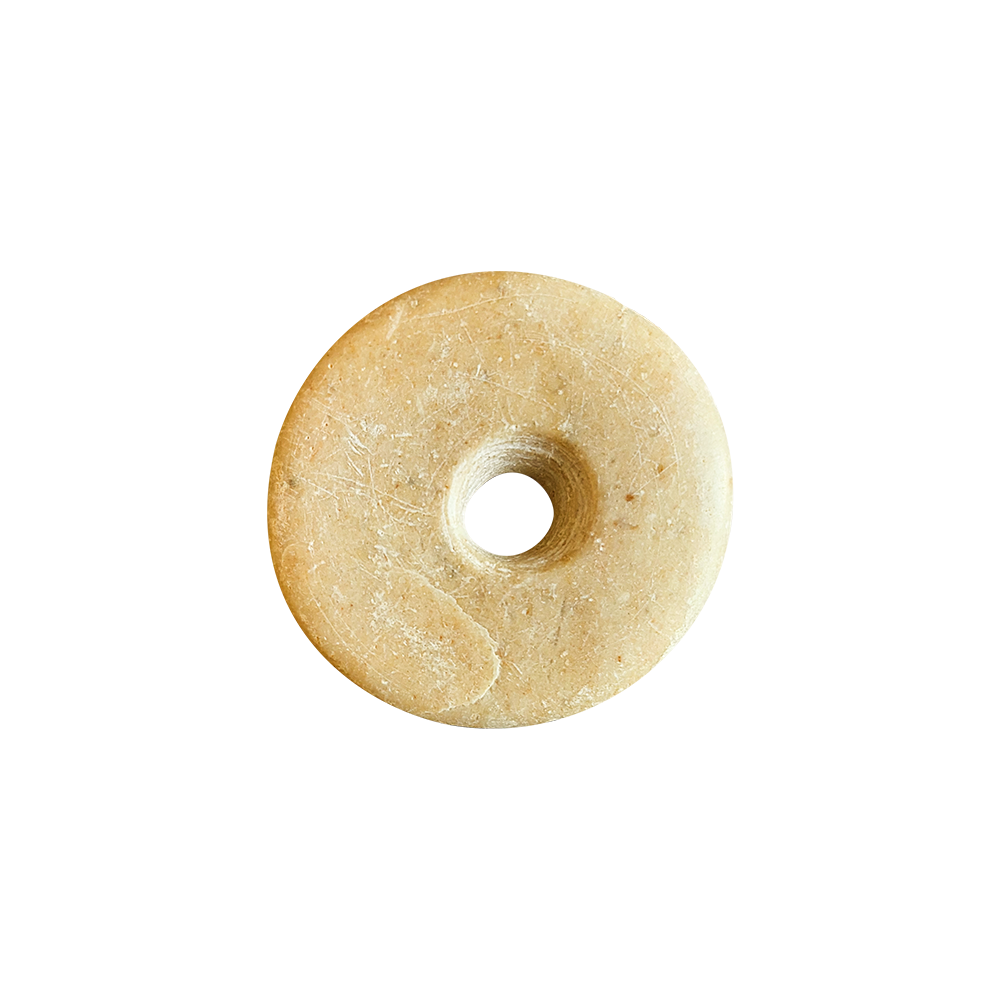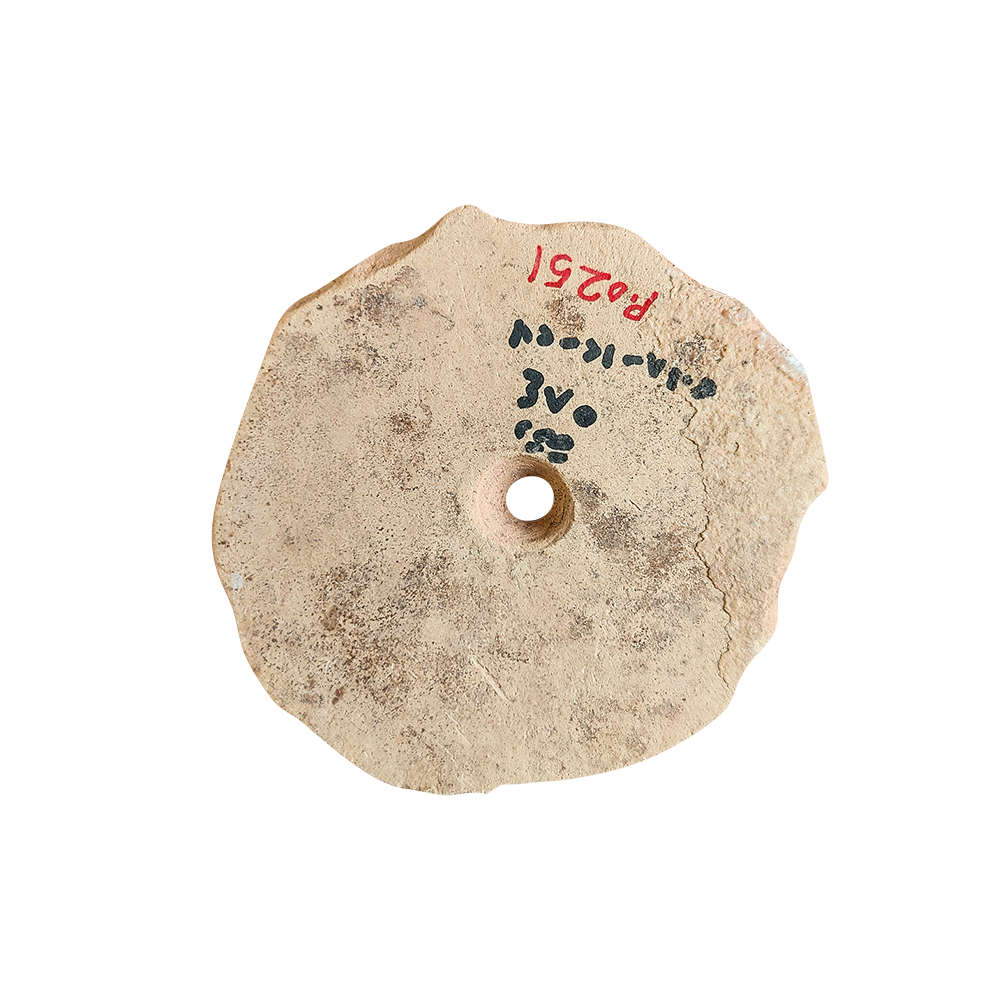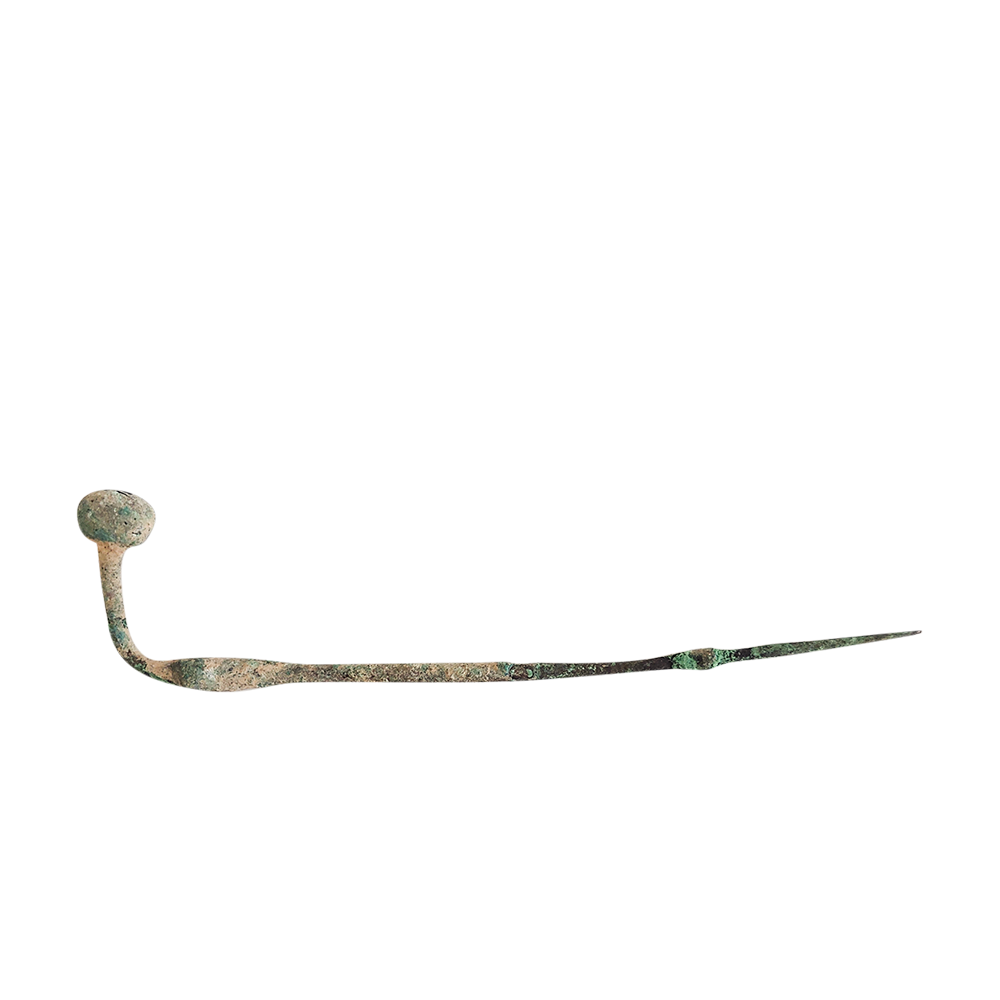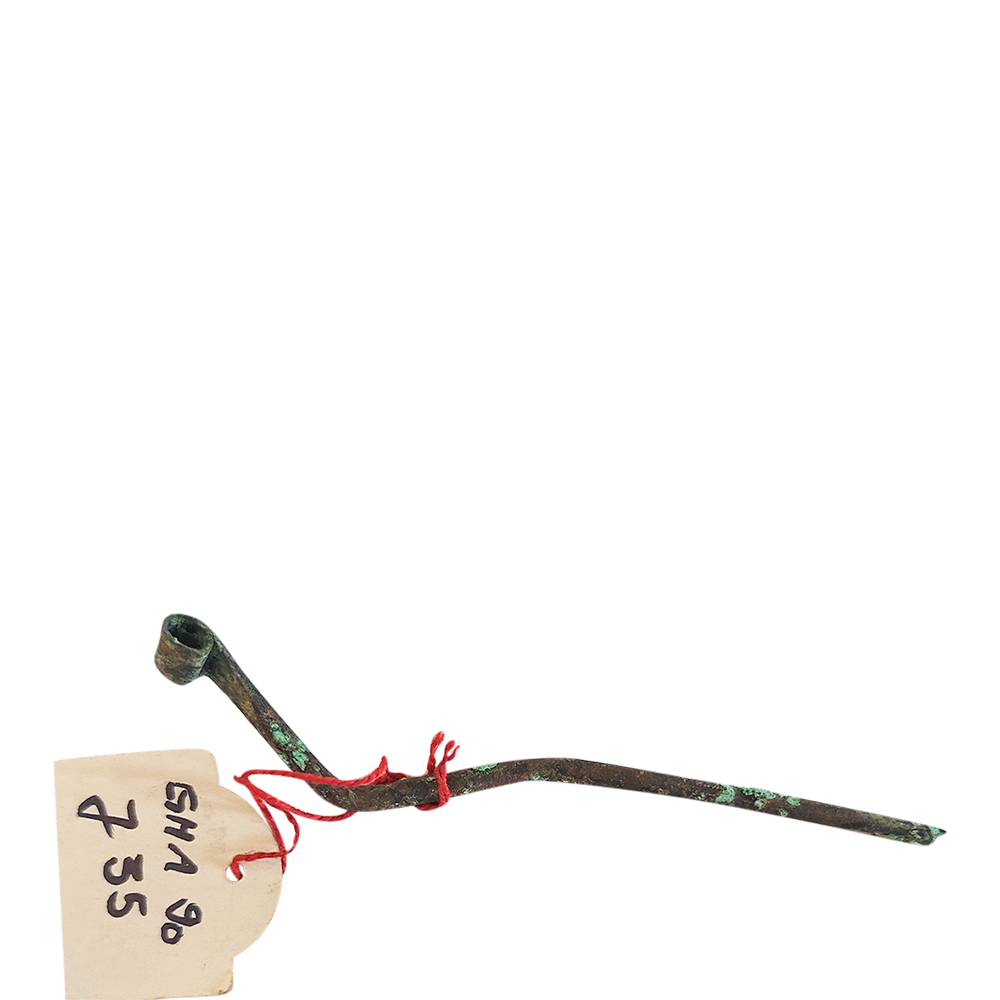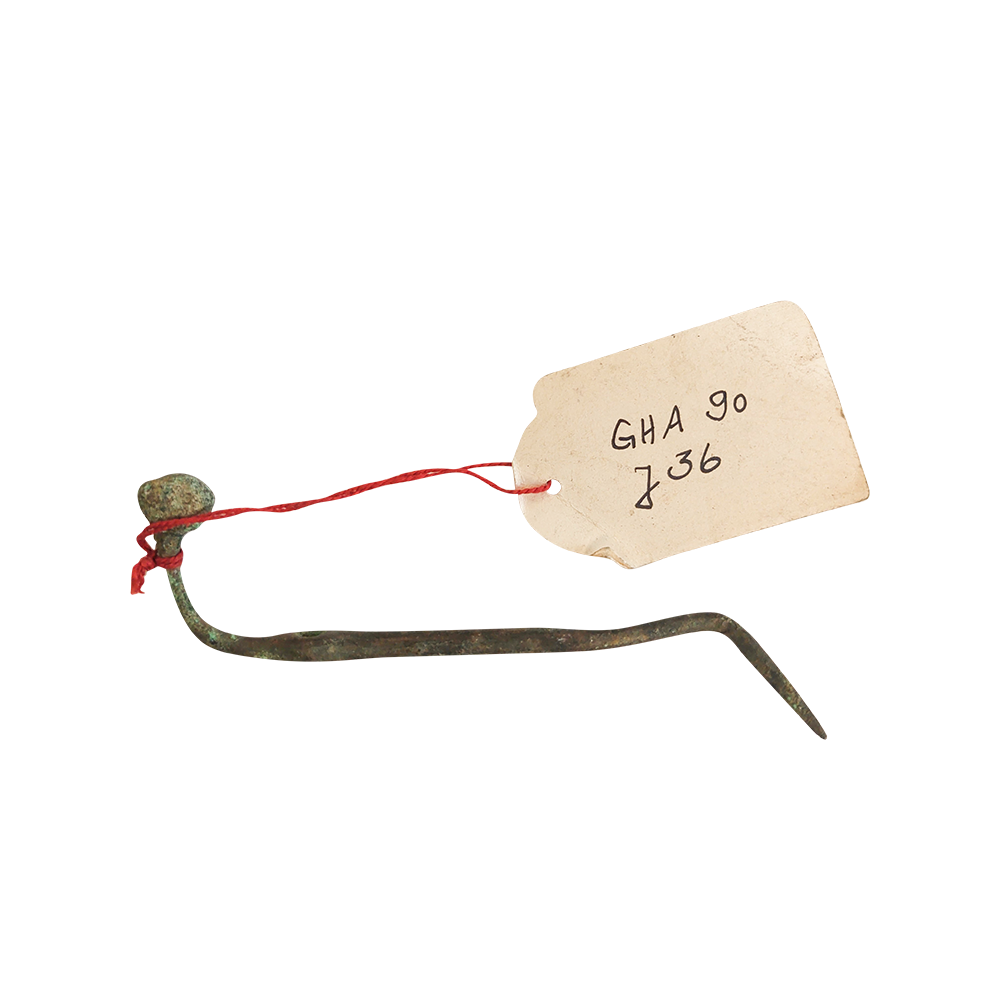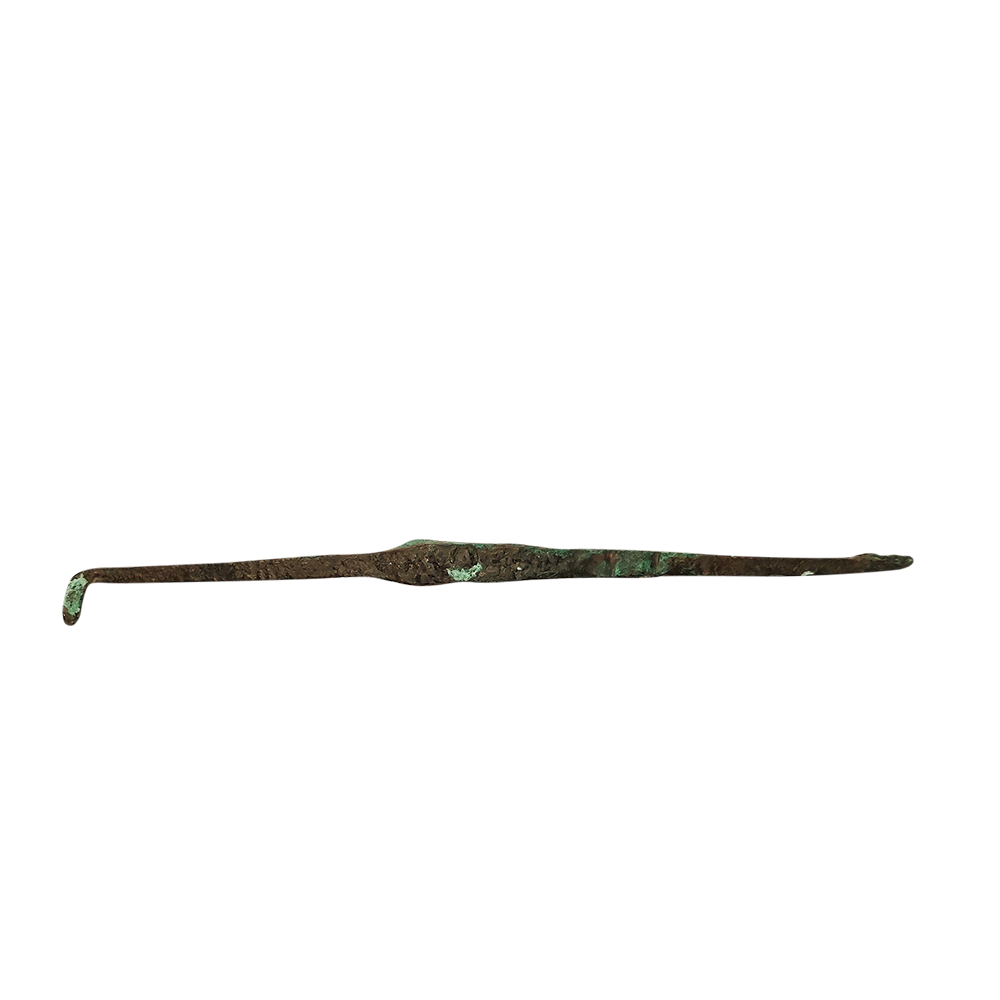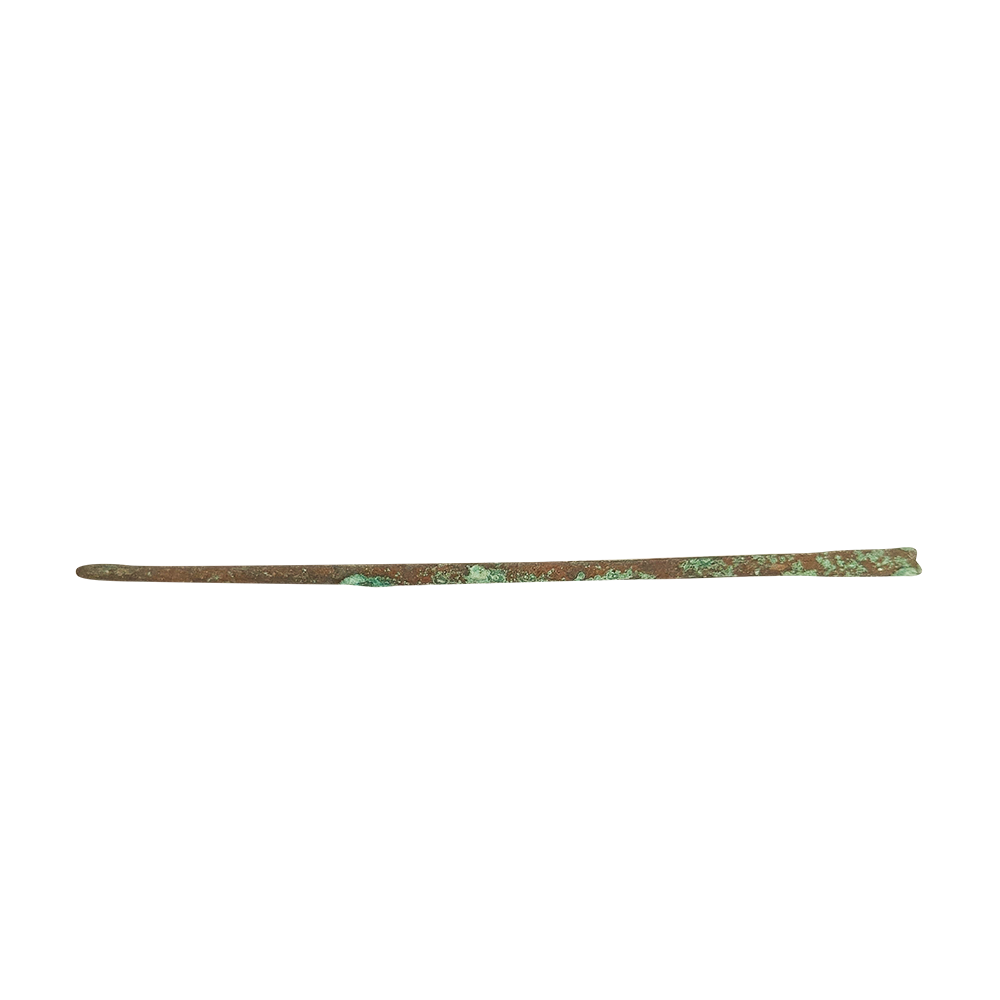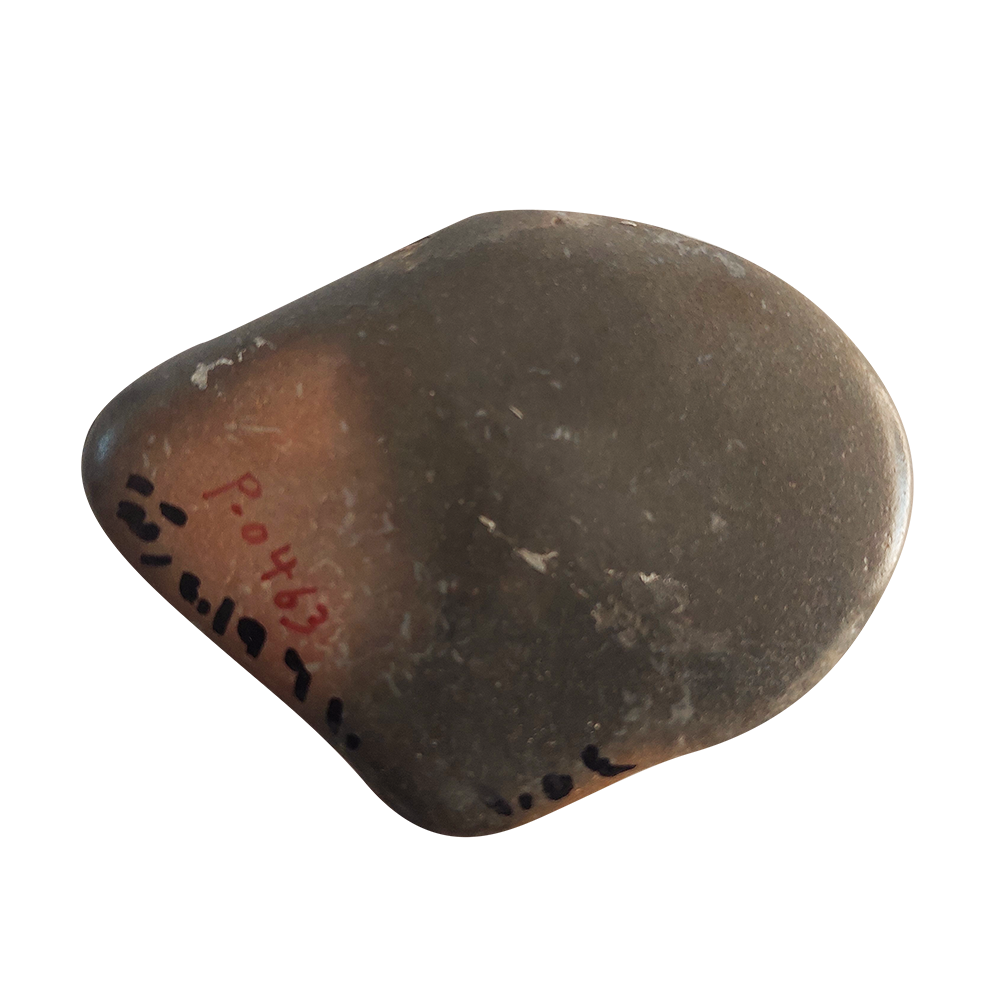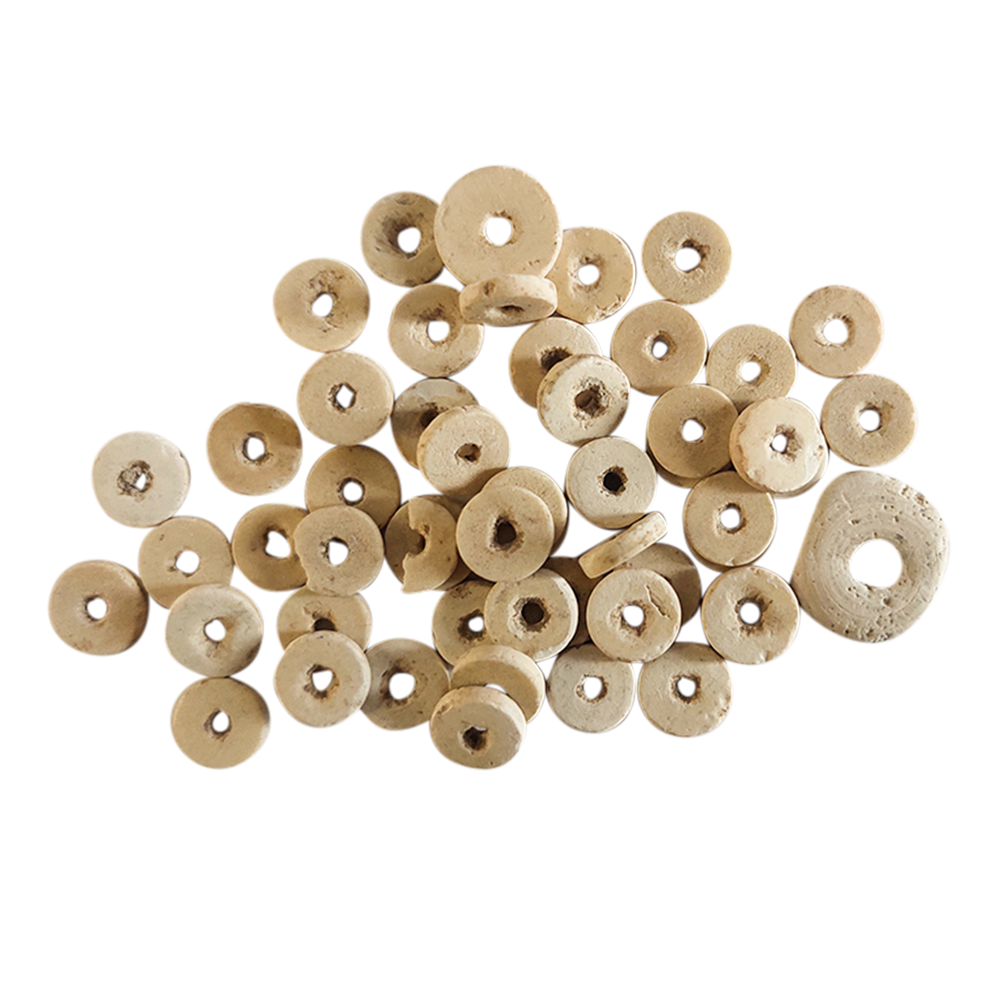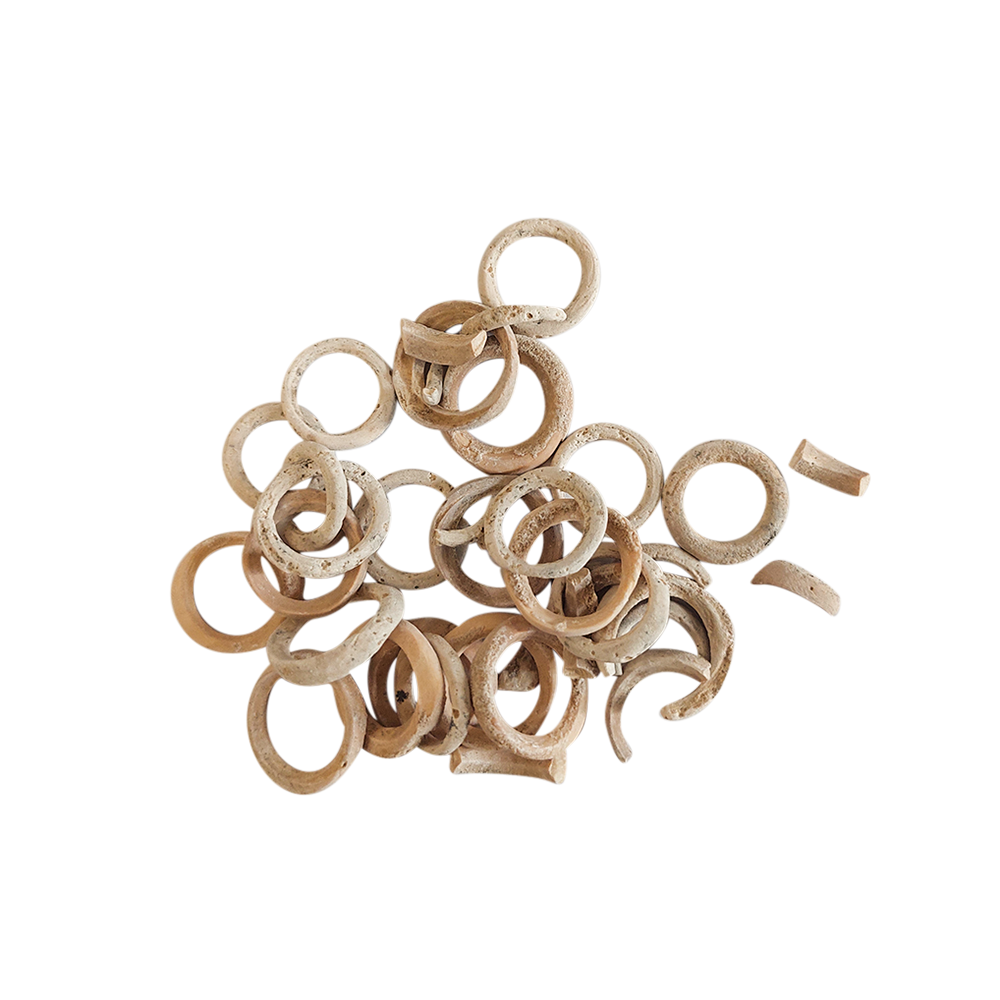
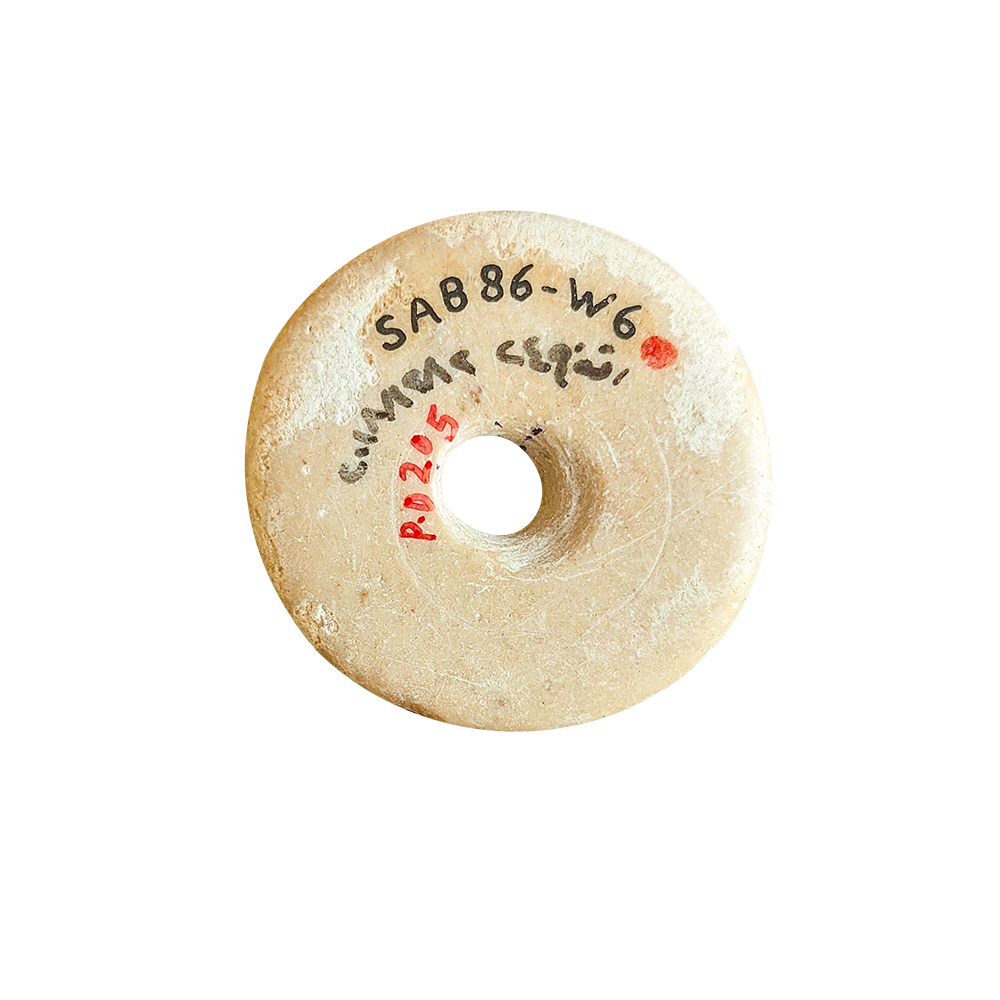
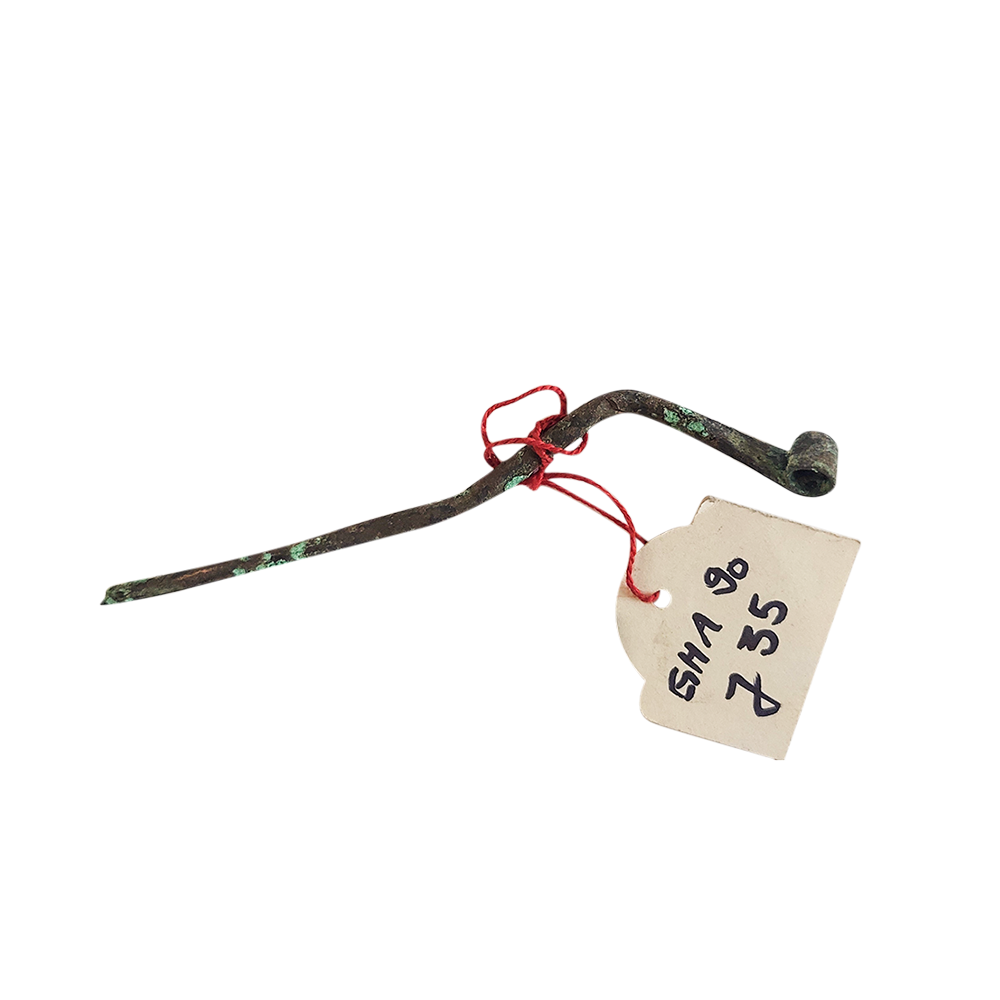
Everyday Life: Pins, Jewellery, and a Make-up Palette
About the exhibition
In ancient times, long before the invention of zips, velcro or even buttons, people had to fasten their garments with pins and thread. You would stick the pin through both parts of the fabric and wind a thread around it until it was fixed and could not move. Such pins were frequently made of bronze, but of course there were fancier ones made of gold or silver, and perhaps even decorated with precious stones. Having survived the destruction and looting, several bronze pins are currently featured in the Raqqa collection.
Of course, the people in ancient times knew how to sew. Their sewing needles were made of bone, and sometimes of ivory. Threads were spun from cotton, silk, and wool from sheep, goats or camels. Spindle whorls, a key tool in wool production, can be found at all evacuation sites. With these, the raw wool would be spun to long threads, which then were woven or otherwise processed.
Cotton production has been prominent in the Indus Valley at least since the 6th millennium, from where it spread westward. Silk production originated in China and also made its way west through the Indus Valley. Historical documents from the 17th century reveal that mulberry plantations existed in the Balikh Valley for sericulture, the cultivation of silkworms, which enabled silk production.
Awls, which were necessary for leatherwork, were also fabricated from bone. Animal tendons proved to be a strong stitching material.
One of the bronze pins shown here is actually a multi-purpose object with two differently shaped tips. It could serve as a cosmetic or perhaps even a medical instrument. As a cosmetic tool, it was used to apply kohl (kajal) or perfumed oil, and as a medical instrument it served as a spatula. The makeup could be spread on stone palettes like our No. 463 and then applied with the pin.
Unfortunately, today no jewellery made of precious materials is preserved in the Museum. Besides the pins which can count as a special kind of attire, only very simple, yet popular ornaments remain. Rings made of shell could be used in many different ways: as finger rings, as necklaces (often combined with other beads) or even sewn as decoration on fabric.
